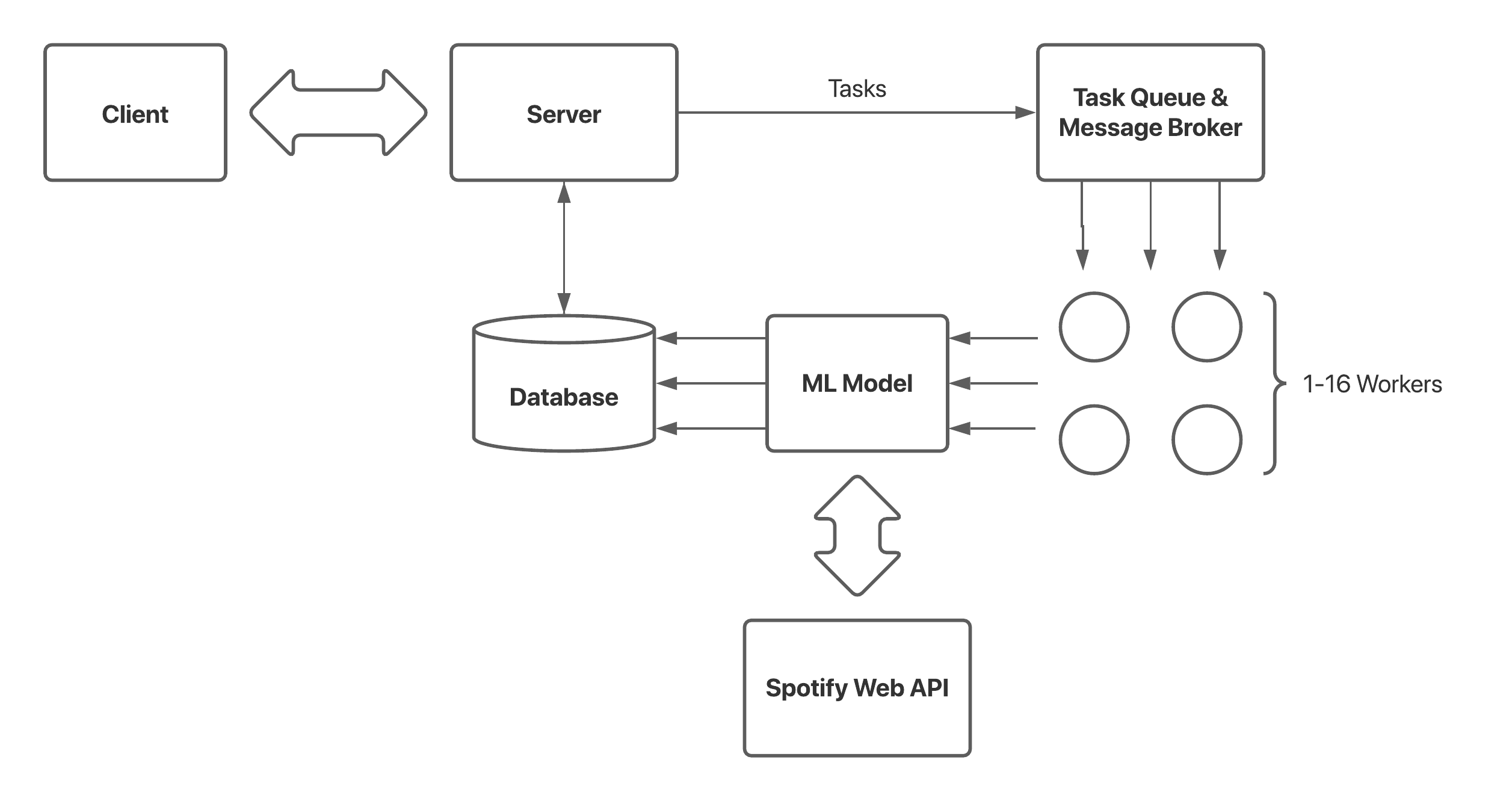Spotify Curator: An ML-Enabled Spotify Assistant
Authors: Jeremy Hsu and Steve Li
Spotify Curator is a full-stack web application leveraging machine learning to help Spotify users discover new songs they love.
Spotify Curator is no longer in active development and is currently in maintence mode.
ML Approach and Data Analysis
Our main dataset consists of songs included in a given user's playlist, labeled as songs that they user "likes," and a relatively equal set of random songs labeled as songs that the user "dislikes." For each song, we take a look at several audio features using the Spotify API, mainly
- Acousticness
- Danceability
- Energy
- Instrumentalness
- Liveness
- Loudness
- Speechiness
- Tempo
- Valence
Each value is a number between 0 and 1, therefore they can easily be transferred and put into a supervised classification model. With some research, we settled on a Random Foest Classifier, using GridSearchV with the parameters:
forest_params = {
'n_estimators': np.arange(10, 200, 10),
'min_samples_leaf': np.arange(1, 100, 10),
'max_features': ['auto', 'sqrt', 'log2']
}Approaches can obviously be improved with accurate data, if a user for example has a playlist of songs that has their dislikes. Furthermore, an unsupervised model such as kmeans could be used to determine the specific genre or subset a given song falls within, and using a simple linear classifier within that subset of data to determine whether that given song falls within an acceptable range in that genre.
Architecture Overview
The high-level architecture layout of Spotify Curator is as follows:
The backend server is written in Python and uses Flask. We call the Spotify Web API here. To deploy the models, we process long running tasks using a distributed task queue. We use Celery as the queue with Redis currently serving as both the message broker and the database.
ML training and inference tasks can take a substantially longer amount of time compared to most other server API calls. Having a server-side asynchronous task queue does not decrease the server response latency, but it ensures that the server does not block while processing these longer requests.
The frontend client is written in JavaScript using the React framework.
Contributing
Backend Setup
We recommend using a virtual environment. To create one, run:
$ python3 -m venv venv
$ source venv/bin/activateAnd to install depedencies:
$ pip(3) install -r requirements.txtYou also need to first set environment variables for the Flask app, Spotify CLIENT_ID, and Spotify CLIENT_SECRET:
$ export FLASK_APP={path to}/app.py
$ export CLIENT_ID={your client ID}
$ export CLIENT_SECRET={your client secret}For everything to work as intended, there should be at least 3 servers running in total (1 Flask, 1 Redis, and 1-16 Celery workers).
$ redis-server
$ celery -A app.celery worker --loglevel=info
$ flask runFrontend Setup
The client is written in JavaScript with React. You can install required dependencies with:
$ npm install
Once the server is running, you can start your app with:
$ yarn start
